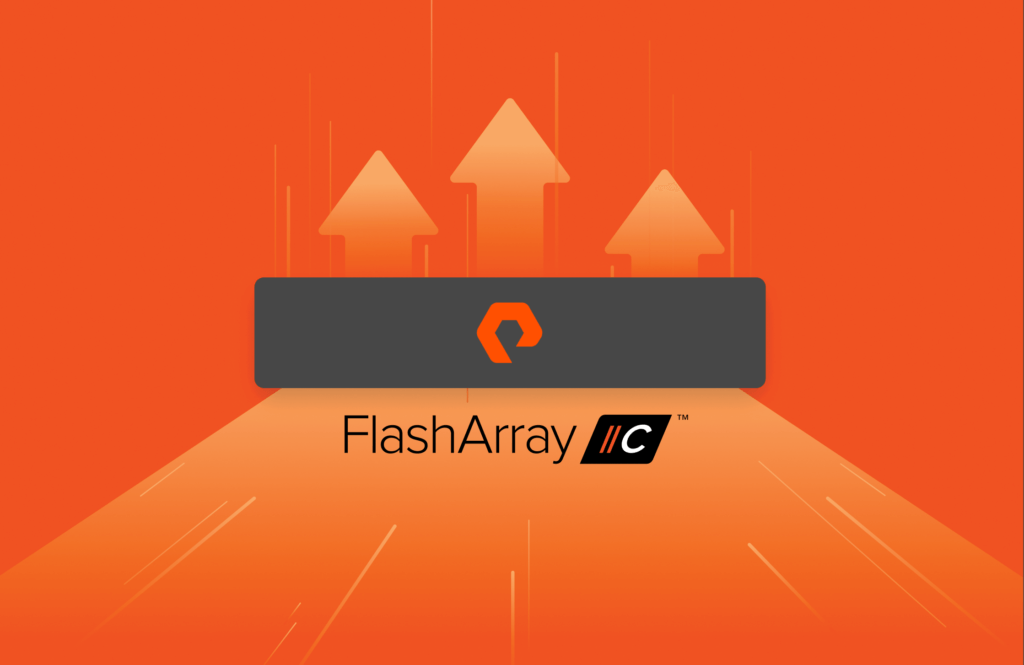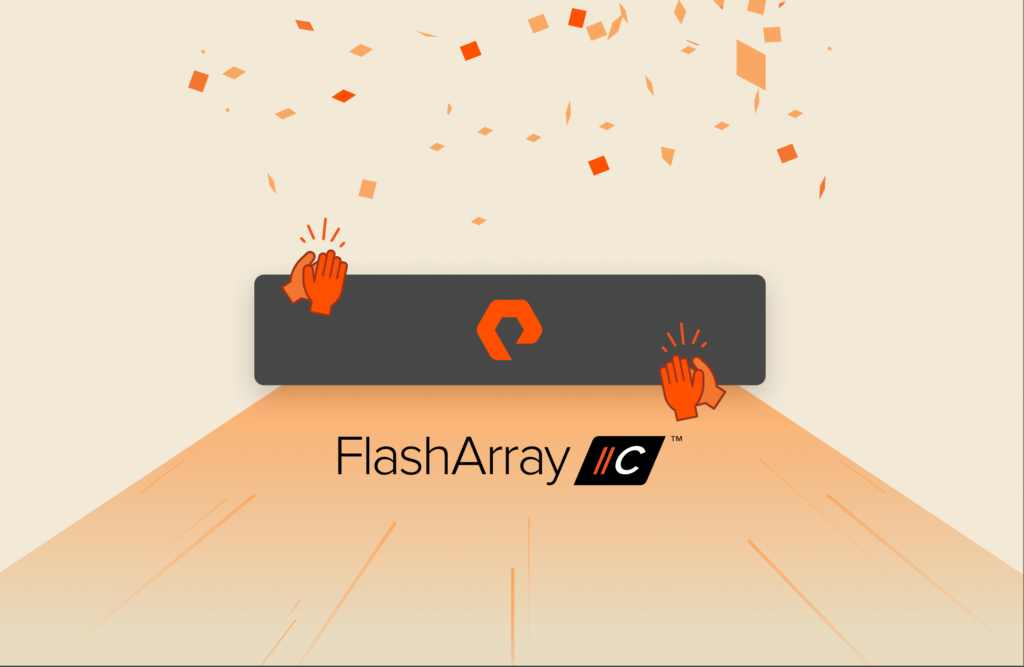(For the purposes of this post, “B.S.” stands for Bogus Statements. Any other interpretation solely results from the reader’s imagination. 😀)
When I was a kid, I remember playing the card game known as B.S. with my brother. I’d try to expertly get rid of all of my cards while yelling “B.S.” enough correct times so that he was overwhelmed in cards that he had picked up—and he was left with a bunch of cards while I won the game. The card game is known by several other names, and if you haven’t played it yet with your friends or family, I highly recommend it.
I was thinking the other day how this particular game is very similar to what customers have to “play” with their IT vendors, every day. Customers need to cut through all of the information that the other players (a.k.a. IT vendors) say and know when to yell “B.S.” at the correct time so that they’re not holding all of the thrown-out cards at the end of the game.
In that light, I thought I would post some of (in my opinion) the common “B.S.” that we’ve been hearing from Dell in order to set the record straight and to hopefully help people see how they are being played by one of the largest IT vendors out there.
The six PowerStore B.S. items that I’ll cover are:
#1 “Built from the ground up” and “Native File Services”
#2 “Scale-up and Scale-out” and “Automated Management of Resources Across the Cluster”
#3 “Active/Active Controller Architecture” is a good thing
#4 Dynamic AppsON – “Better Together” with VxRail
#5 PowerStore is designed for six-nines availability
#6 Synchronous Replication Shenanigans
PowerStore B.S. Item 1: “Built from the ground up”¹ and “Native File Services”²
If a system was “built from the ground up,” I’d expect it to look very different from an existing product that was released in April 2019. That is apparently not the case with PowerStore. See Figure 1 and 2 to compare the rear view of a Dell EMC Unity XT 480F to a Dell PowerStore Gen 2. They look strikingly similar, don’t they?

Figure 1. Dell EMC Unity XT 480F³

Figure 2. Dell EMC PowerStore T⁴
Now you might say, “Come on, Dennis, they just reused the chassis, that’s no big deal.” That leads me to the other B.S. claim of “Native File Services.” If Dell truly built a platform from the ground up, I’d expect that the features used would be native in the software stack, and not “bolted on” later. Their “Native File Services” are actually virtualized network-attached storage servers (referred to as NAS servers), which are deployed on each controller/node in the appliance. Doesn’t this sound a lot like Unity NAS? Interestingly, if you compare some of the CLI commands between Unity NAS and PowerStore NAS, they use the same commands.⁵
This further shows that their file implementation is nothing new, just reused technology from another product. Also of note, the NAS servers consume compute resources away from the PowerStore Operating System. This is actually a decision that forces customers to choose between a “block optimized” installation or a “unified” installation. Oh, and if the wrong choice is made, the only way to change it is a complete reinstallation (factory reset) of the array.
OK, how about some other areas where we can see differentiation from previous models, such as in data resiliency? Did Dell make some giant leaps there? No. PowerStore uses RAID 5 (using a 4+1 or 8+1 geometry) and RAID 6 (using a 4+2 or 8+2 geometry).⁶ Guess what other platform uses those exact RAID configurations? You guessed it: Unity XT.⁷ What is also interesting is that Unity XT calls RAID “dynamic pools,” where PowerStore calls it “Dynamic Resiliency Engine.” It looks like they even had to reuse some of the names, not just the technology.
Maybe Dell did something special with encryption? Nope, PowerStore has no native software-based encryption and just uses self-encrypting drives (SED).⁸ This approach adds to the overall cost of the solution and limits flexibility of advanced security features. I’ve found no mention of advanced security features for PowerStore such as Rapid Data Locking and automatic key regeneration, both of which Pure Storage FlashArray™ supports.
So, again, is PowerStore a retrofitted Unity XT? From my perspective, the answer is absolutely. Dell appears to have carried forward many parts of Unity XT, which likely limits what it can support from a hardware and software perspective, instead of truly innovating “from the ground up.”
Pure Storage FlashArray was truly built from the ground up with NVMe and other storage technologies in mind. We launched our modular long-life chassis in 2015 with FlashArray//M™, which is the same chassis we use today while evolving the storage technologies within it. We also created our own DirectFlash® Modules in 2017, allowing us to implement 100% of our storage functionality in software. This has allowed us to move completely to 100% NVMe for all models of FlashArray while also supporting storage-class memory (SCM) in our DirectMemory™ Cache. FlashArray also supports NVMe over Fabrics (NVMe-oF) on the host side, as well as the back-end connecting expansion shelves. We can implement new features via our software stack at any time, as shown by our ransomware recovery features and our Unified Block and File services. When customers combine that technology with our leading data reduction services and always-on encryption with the Evergreen//Forever™ business model, they can upgrade individual components non-disruptively as their business requires them.
PowerStore B.S. Item #2: “Scale-up and Scale-out”⁹ and “Automated Management of Resources Across the Cluster”¹⁰
The scale-up vs. scale-out B.S. point has been around for a while, mostly when competing against Dell EMC XtremIO and NetApp AFF. In fact, Pure discussed the topic of scale-up or scale-out way back in 2014. Many of the points in that article are still valid, especially in light of how technology has changed since then. But enough reminiscing, let’s discuss how Dell PowerStore “scales up and scales out.”
PowerStore can “scale-out” to a max of four appliances, which can also be different models with different media types.¹¹ Dell will make it sound like it’s the best thing since sliced bread.¹² Why am I calling B.S.? PowerStore is not a true scale-out system. Data is not striped or placed across the appliances. Volumes are created on a specific appliance while the “Resource Balancer” will (hopefully) provide recommendations on where to place the volume. Resource Balancer only uses capacity-free space to determine where to place the new volume.¹³ I’m sorry, but that’s not very useful: “Automatic data placement” should incorporate more analytics other than free space, such as array load, workload type, location, etc. This is why PowerStore can support different models with different capacities in the same “cluster,” because data is located only on one appliance at a time. The industry as a whole refers to this as a management “federation,” not a scale-out cluster. Chris Mellor with Blocks and Files wrote a fantastic article discussing this point.
The benefit of a management federation is to provide flexibility and simplicity. Pure launched our “management federation” solution Pure1® in 2015 to provide a cloud-hosted flexible simplified management plane for all Pure products. Today, Pure1 can help any type of administrator manage Pure products while providing VM-level and array-level analytics around performance and capacity planning. For intelligent workload management, Pure Fusion™ can optimize storage pools and assign and rebalance workloads as conditions change—without hands-on management.
PowerStore B.S. Item #3: “Active/Active Controller Architecture”¹⁴ Is a Good Thing
We see this B.S. item come up a lot, usually surrounded by some half-truths. I love the saying that “Two half-truths don’t make one truth.”¹⁵ PowerStore claims “active/active controller architecture where both nodes are servicing I/O simultaneously.”¹⁶ Frankly, that has been the legacy over the course of VNX to Unity to now PowerStore. Each controller is “active,” however, volumes (LUNs) are owned by a particular single controller. Up through the Unity XT family, it was up to the administrator to determine which controller owned the volumes and to keep things balanced by assigning volumes to “SPA” or “SPB.”¹⁷ Now, with PowerStore, the system will choose which controller the volume is owned by (called node affinity),¹⁸ and relies on Asymmetric Logical Unit Access (ALUA) to maintain multiple optimized and non-optimized paths for I/O.¹⁹ This way, the “non-optimized” path will take over in case of a controller or path failure. This is more like “asymmetric active/active” as a host can access data only via the peer active-controller only when the owning controller has failed.
This really matters in the performance during a path failover, controller failure, or controller upgrade. If a path is non-optimized, the non-owning controller must pass it off to its peer for actual execution. And this hand-off takes time, incurring at least some amount of latency. If controller A is at >50% utilization and it needs to fail over to controller B, which is also at >50% utilization, you now have a big performance problem.
Contrast that with FlashArray, where all of the front-end ports of both controllers are active-active, with the paths cross-connected across each controller so that either one can see all paths and support the performance of all paths. Internally, the two controllers communicate actively and one passes its I/O to a designated primary back end, where each back end is sized to handle the workload of the entire system for primary software functions, including data compression, deduplication, encryption, snapshots, active-active multi-system clustering, and so on. Since both back ends can individually handle 100% of the system load, there’s no tangible performance impact if there’s ever a controller failover. Because the controllers are “stateless,” this enables online, non-disruptive controller upgrades (one at a time) without impacting performance—effectively abolishing re-zoning/re-mapping and other menial tasks, while eliminating traditional data migrations. In our experience, customers love this feature, and often cite it as one of the key reasons that they replaced their legacy storage with Pure Storage products, particularly in mission-critical environments.
PowerStore B.S. Item #4: Dynamic AppsON – “Better Together” with VxRail
Dynamic AppsON is a new B.S. item launched back in May. Dell has touted that Dynamic AppsON provides “exclusive integration between compute-only Dell VxRail dynamic nodes and a Dell PowerStore storage system.”²⁰ I’m calling out B.S. since this is really nothing more than a VMware plugin, which will show PowerStore OS upgrades within VMware vCenter. Dell also claims²¹ that this will “break down silos… by combining the latest in storage with the best in HCI.” That is a pretty bold claim for a vCenter plugin to achieve. I’d like to point out that most storage vendors have vCenter plugins, including us here at Pure Storage. Add in VMware Cloud Foundation (VCF), which supports FlashArray, this achieves even greater operational simplicity of the VMware stack, without the storage silos and painful data management created by HCI (like VxRail). While getting perceived simplicity with Dynamic AppsON, our customers have told us that hyperconverged offerings come with a ton of trade-offs while attempting to fix issues that are no longer relevant.
PowerStore B.S. Item #5 PowerStore is designed for six-nines availability²²
Six-nines (99.9999%) availability equates to ~31 seconds of downtime per year. I’m calling B.S. on PowerStore to meet that level of availability since even Dell’s flagship storage product (PowerMax) can’t meet that level of availability without the use of SRDF/Metro.²³ Not to mention that Dell’s specifics around availability are lacking, and Dell’s own footnotes to the statement say “Actual system availability may vary.”²⁴
Pure FlashArray has proven seven nines availability (equivalent to three seconds of downtime per year) across the Pure1 collective installed base—inclusive of maintenance, failures, and generational upgrades. Customer data is always available, always performing, and always protected—without performance loss.
PowerStore B.S. Item #6 Synchronous Replication Shenanigans²²
When it first launched, PowerStore didn’t offer a native synchronous replication solution. In October 2020, Dell launched the PowerStore Metro Node²⁵—a replatformed iteration of the existing VPLEX technology in an appliance.²⁶ Then in May 2022, Dell launched native synchronous replication in PowerStore OS 3.0 with a feature called “Metro Volume.”²⁷ Too bad for those customers who purchased the Metro Node hardware. I’m calling “B.S.” on this solution because Dell is making it seem like it’s a new integrated technology that’s addressing a feature gap, yet Metro Volume falls short. Metro Volume does not utilize a cloud mediator or a third site as a tie-breaker witness and relies on a “polarization” process²⁸ and VMware High Availability (HA) for VM restarts.²⁹ It requires VMware vSphere Metro Storage Cluster (vMSC)³⁰ and only supports TCP-based replication.³¹ That is a lot of gotchas for a solution that is touted as achieving “operational simplicity and agility.”³² In my opinion, Dell continues to fail to add native features to PowerStore that don’t require some kind of trade-off.
On the other hand, Pure Storage ActiveCluster™ is a natively integrated synchronous replication solution with no additional hardware or licensing requirements. ActiveCluster supports either IP or Fibre Channel connectivity to provide greater connectivity flexibility. ActiveCluster also comes with the Pure1 Cloud Mediator, a SaaS-based quorum witness that eliminates the need for a third site. Provided within Purity, ActiveCluster continues to receive upgrades as part of the Evergreen//Forever subscription model. You can also use ActiveCluster with Pure Cloud Block Store™ instances, which allows greater data protection and mobility. No gotchas here. Configure ActiveCluster in only four steps and one new command to set up in minutes.
Well, those are just a few of the “B.S.” items coming from Dell for PowerStore. Maybe you’ll see another post outlining a few more! If you have any questions about FlashArray, please reach out to your Pure Storage account team. Thanks for reading!
* More info about the card game
Read what my colleagues Prakash Darji and Scott Baker have to say in their posts:
“Dell PowerStore: Solving Dell Problems vs. Customer Problems”
“Data Storage Decisions Shouldn’t Leave You With Doubts”
References
¹Page 1, https://www.delltechnologies.com/asset/en-au/products/storage/technical-support/h18234-dell-powerstore-data-sheet.pdf
²Page 4, https://www.delltechnologies.com/asset/en-us/products/storage/industry-market/h18155-dell-powerstore-file-capabilities.pdf
³www.delltechnologies.com/en-us/storage/unity/unity-480f-all-flash.htm, accessed May 2020
⁴https://www.delltechnologies.com/asset/en-us/products/storage/industry-market/h18149-dell-powerstore-platform-introduction.pdf, Page 12, accessed August 2023
⁵See page 18 https://www.delltechnologies.com/asset/en-us/products/storage/industry-market/h15572-dell_emc_unity-nas_capabilities.pdf
⁶https://www.dell.com/support/kbdoc/en-us/000188491/powerstore-how-powerstore-physical-capacity-is-calculated
⁷https://www.delltechnologies.com/asset/en-us/products/storage/industry-market/h16289-dell_emc_unity-dynamic_pools.pdf
⁸https://dl.dell.com/content/manual52196227-dell-emc-powerstore-security-configuration-guide.pdf?language=en-us&ps=true
⁹https://www.youtube.com/watch?v=JsJRB-QzdUI
¹⁰https://infohub.delltechnologies.com/l/oracle-rac-high-availability-on-powerstore-t/powerstore-t-features-and-benefits
¹¹Page 7 https://www.delltechnologies.com/asset/en-us/products/storage/industry-market/h18157-dell-powerstore-clustering-high-availability.pdf
¹²https://www.youtube.com/watch?v=YTsXhM566Dk
¹³ Page 18 https://www.delltechnologies.com/asset/en-us/products/storage/industry-market/h18157-dell-powerstore-clustering-high-availability.pdf
¹⁴Page 5 https://www.delltechnologies.com/asset/en-us/products/storage/industry-market/h18149-dell-powerstore-platform-introduction.pdf
¹⁵www.goodreads.com/quotes/tag/half-truths
¹⁶Page 11 https://www.delltechnologies.com/asset/en-us/products/storage/industry-market/h18149-dell-powerstore-platform-introduction.pdf
¹⁷Page 9 https://www.delltechnologies.com/asset/en-us/products/storage/industry-market/h15162-dell_emc_unity-high_availability.pdf
¹⁸Page 12 https://www.delltechnologies.com/asset/en-us/products/storage/industry-market/h18241-dell-powerstore-best-practices-guide.pdf
¹⁹Page 12 https://www.delltechnologies.com/asset/en-us/products/storage/industry-market/h18241-dell-powerstore-best-practices-guide.pdf
²⁰https://infohub.delltechnologies.com/p/dell-vxrail-and-dell-powerstore-better-together-through-dynamic-appson/
²¹https://www.delltechnologies.com/asset/en-us/products/converged-infrastructure/briefs-summaries/dynamic-appson-infographic.pdf
²² Page 1 https://www.delltechnologies.com/asset/en-au/products/storage/technical-support/h18234-dell-powerstore-data-sheet.pdf
²³ Page 4 https://www.delltechnologies.com/asset/en-us/products/storage/industry-market/h17064-dell-powermax-ras-white-paper.pdf “PowerMax arrays are architected for six nines (99.9999%) availability. The many redundant features discussed in this document are factored into the calculation of overall system availability.” SRDF is listed on page 33.
²⁴Footnote 4 https://www.delltechnologies.com/asset/en-au/products/storage/technical-support/h18234-dell-powerstore-data-sheet.pdf
²⁵https://volumes.blog/2020/10/16/introducing-dell-emc-powerstore-metro-node/
²⁶Page 7 https://dl.dell.com/topicspdf/dell-emc-metro-node_administrator-guide4_en-us.pdf
²⁷https://volumes.blog/2022/05/10/dell-powerstore-3-0-part1-metro-volumes/
²⁸https://infohub.delltechnologies.com/l/dell-powerstore-metro-volume-1/polarization-1
²⁹https://infohub.delltechnologies.com/l/dell-powerstore-metro-volume-1/failure-scenario-table-1
³⁰https://infohub.delltechnologies.com/l/dell-powerstore-metro-volume-1/supported-configurations-4
³¹https://infohub.delltechnologies.com/l/dell-powerstore-metro-volume-1/supported-configurations-4
³²https://volumes.blog/2022/05/10/dell-powerstore-3-0-part1-metro-volumes/
Written By:
Comparing Dell EMC to Pure?
We think you should see the whole story for yourself.







